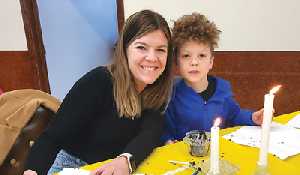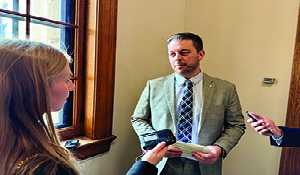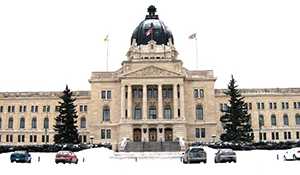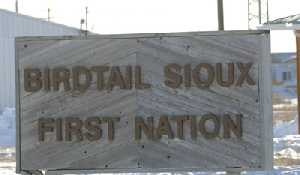Vimy Flight lands in Moosomin
August 19, 2017, 9:39 am
Kevin Weedmark
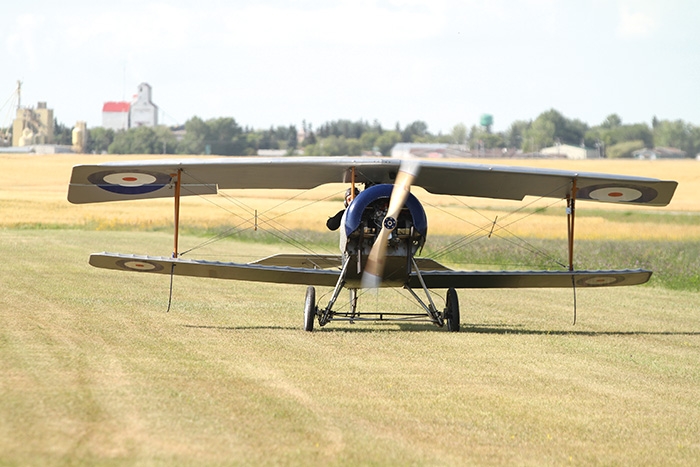

In April of this year, a group of Canadian military veterans flew a group of First World War vintage aircraft over the Vimy Ridge Memorial to Canada’s war dead in France.
The Vimy Flight Team has returned from Northern France and have embarked on their quest to share the message of freedom and honour.
They are crossing the country, and two of the First World War planes made a brief stop Friday morning in Moosomin.
Pilots Larry Ricker and Dave Wilson touched down at Moosomin airport with the 100-year-old biplanes while a large crowd gathered around to see the planes and speak with the two pilots.
Vimy Flight consists of a team of Canadian military pilots who are retired or active. With over 230,000 hours of combined flying experience, the 10 hand-picked pilots understand the tremendous risk and courage required to fly these fragile craft.
Pilot Larry Ricker spoke to the crowd, explaining the purpose of Vimy Flight, and telling them stories about some of the dangerous things that happened to First World War pilots who flew the extremely light planes, which were made from wooden frames with linen stretched over them.
“The reason we’re doing this across Canada is because we want to honor not just the guys who flew these airplanes, but we want to honor all of the people who fought for Canada,” said Ricker in an interview Friday at the Moosomin airport. “They were very brave and they stepped forward and in many cases they gave the ultimate sacrifice.
“The mothers of these boys would say go into the Air Force, it’s safer there. But one in five pilots died. The average lifespan of a pilot was three weeks. In April of 1917 they called it bloody April—they lost 286 aircraft in that month alone.
“But they were prepared to accept those losses because of what the airplanes were doing. They were fighting off the Germans, who were trying to shoot down our observation balloons. Our observation balloons were vitally important because they were gaining information on where the trenches were, where the enemy positions were, and it was allowing them to accurately aim the artillery fire to move the Germans back. It was vitally important that those balloons were able to map the positions of the enemy.
“We’re doing it to honor those brave pilots, and to honor all veterans. That’s why we’re going across the country at 65 miles an hour.
“We’ve been meeting great people across the country and we just tell the story. We’re on our way to Vancouver and Victoria and that will end the tour.”
Ricker says the planes, which are slow and light, are actually difficult to fly.
“It’s a little hard on the ego. We’re all ex-Royal Canadian Air Force, so we’re used to going 600 miles an hour and now we’re going 65,” he says with a laugh.
“People ask us how hard it is to fly this. We’re all ex-RCAF pilots and most of us are airline pilots. Between the 10 pilots we have about a quarter million hours of flying experience. I fly a Boeing 777 for Air Canada. That’s what I do in my day job. But this is harder to fly. If you take your hands off the controls—I’ve timed it—it’s three seconds to be inverted.”
The 10 pilots are trading off on flying duties between their regular flying jobs.
“I have to get to Regina today. I fly to Toronto tomorrow, and then I’m flying about 400 people to Hong Kong the next day,” says Ricker.
Why are the pilots taking time to do this?
“We feel at Vimy Flight that what happened in World War I, World War II and all of the conflicts, that we don’t have a right to forget all of those brave men and women who have stepped up and stepped forward to do the right thing, to stand up for our way of life, our country and our freedom,” says Ricker.
“That is how important the men and women of our country were and are today to our individual freedom. They in many cases gave the ultimate sacrifice to stand up for our way of life and our freedom and it is a wonderful thing. Not enough people know the story of what happened and we don’t want people to forget. If we forget at some point it may happen again.”
Ricker says the public has responded well to the flight.
“We hear so many great stories of people where their grandfathers were involved or maybe they as a family went over to France a few years ago. It has been very moving the stories that we are hearing,” he says.
The planes that the pilots are flying are replicas of the real ones used in the First World War. They were built by builders in Canada and the U.S.
The pilots approached the Royal Canadian Air Force about doing Vimy Flight and the airforce said yes. One C17 aircraft was dedicated to fly the planes to France and then back to Canada for the cross-country flight.
The cockpits are open to the air, and Ricker says it has taken some skill learning to fly the planes.
“They are a wonderful aircraft to fly,” he says. “They are very sensitive. Imagine being in a motorcycle with wings, and that is what is like. You have got the air in your face and hair. It is very, very maneuverable. It was the front line fighter in 1917.”
The planes top out at 90 miles per hour and typically go 60 miles per hour.
“We are very limited by the wind,” says Ricker. “If we get a strong cross wind we are not able to fly, and any kind of gust throws the plane around. These were the planes that were called kites in World War I and I always wondered why and now I know.”
The planes also fly at very low altitude.
“Often during the air wars the fights in the war were at less than 1,000 feet altitude,” says Ricker.
What has he learned by being part of this project?
“I have learned that we have an amazing country and the reason for that isn’t the land, it is the people,” he says. “The people—just like today—are amazing and we have made so many friendships along the way. We meet as friends and leave as family.”
More information on the project is available at vimyflight.ca.
































